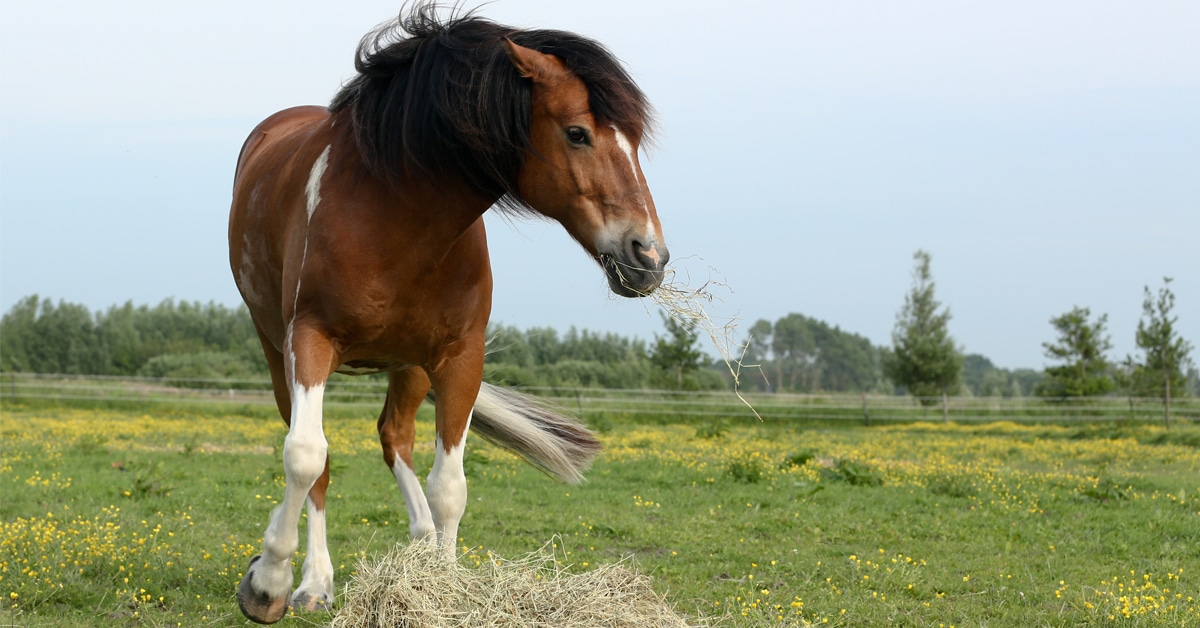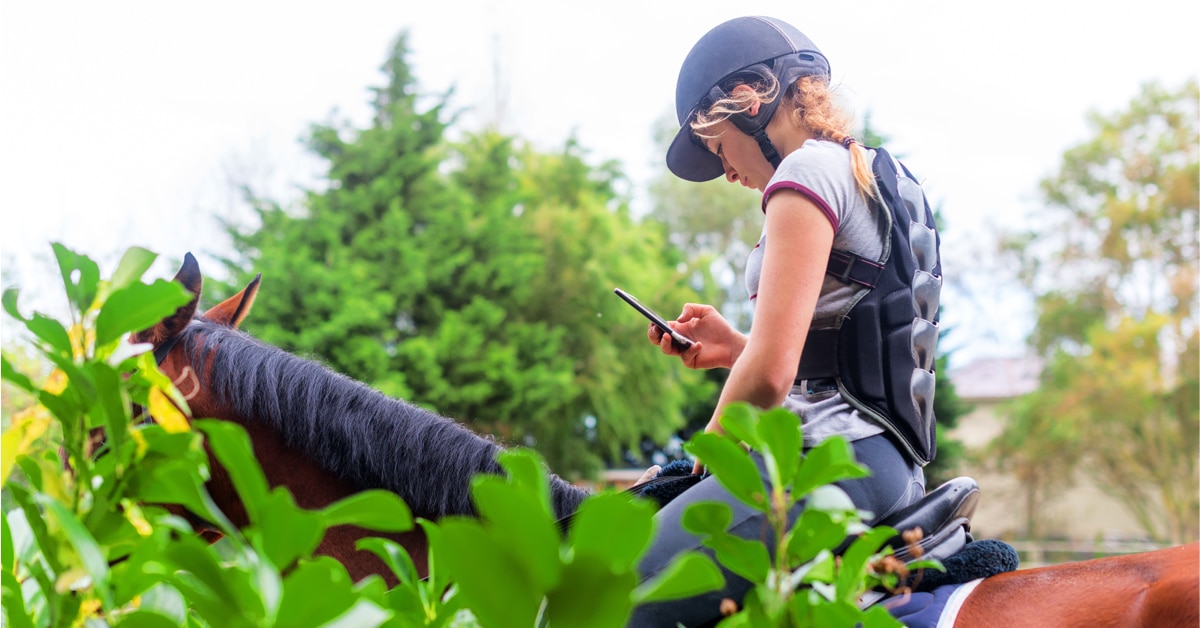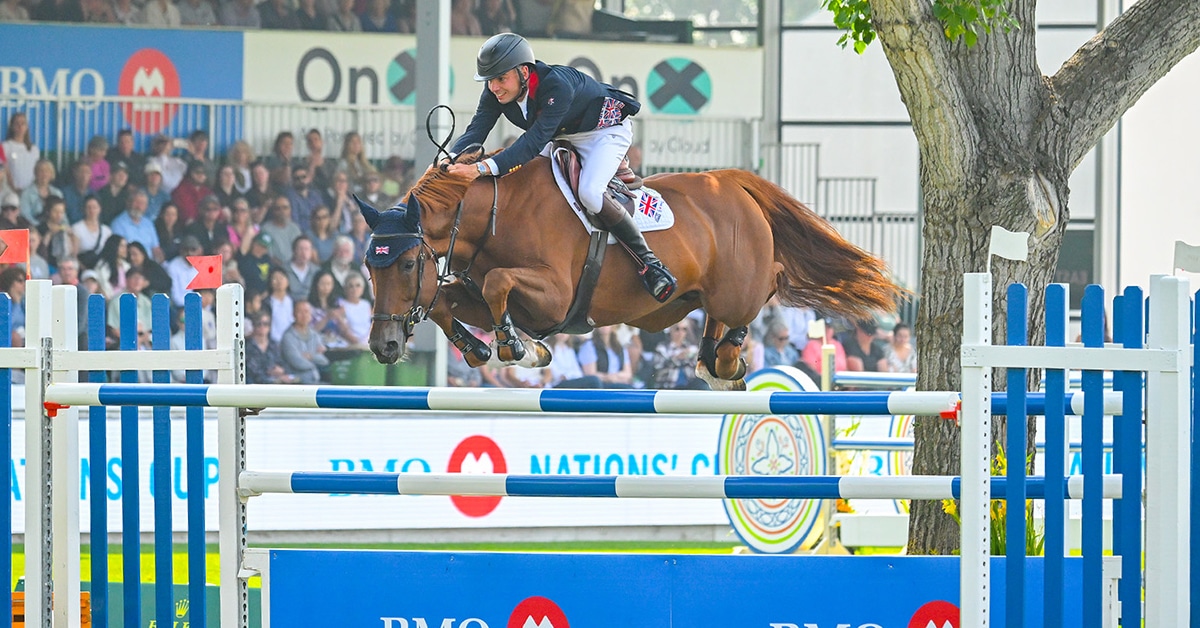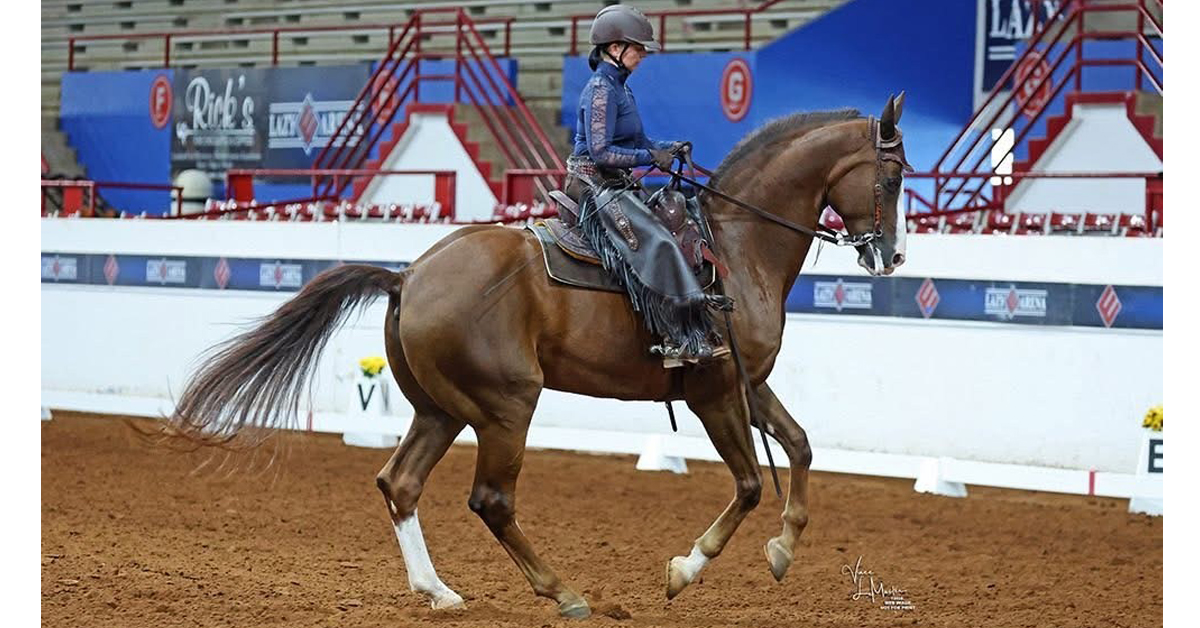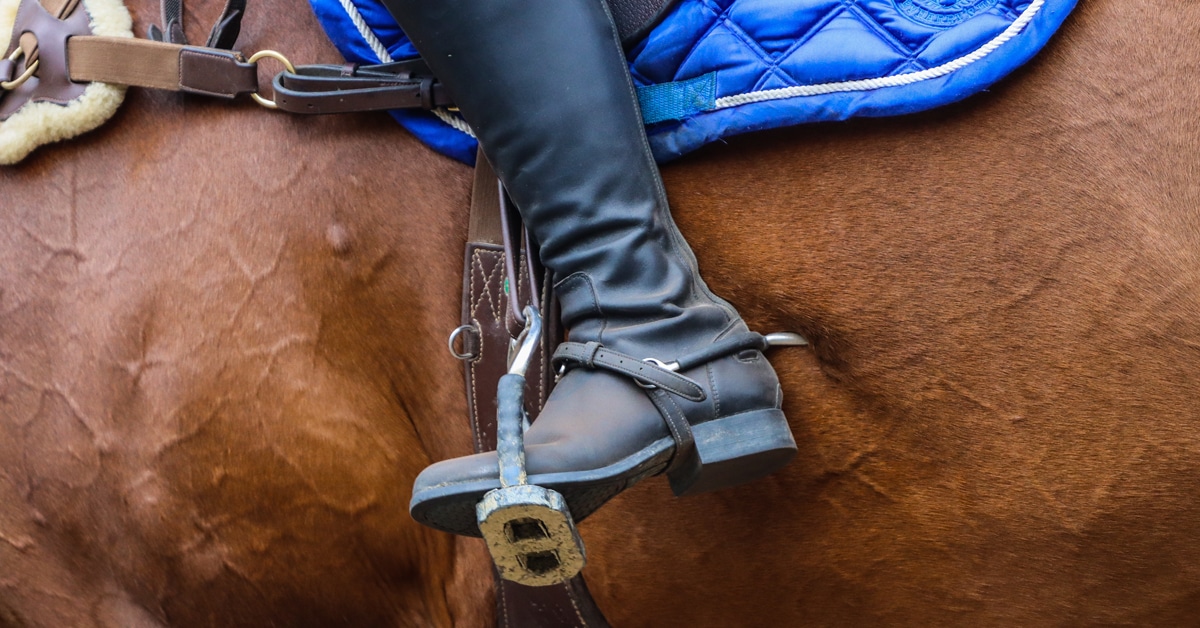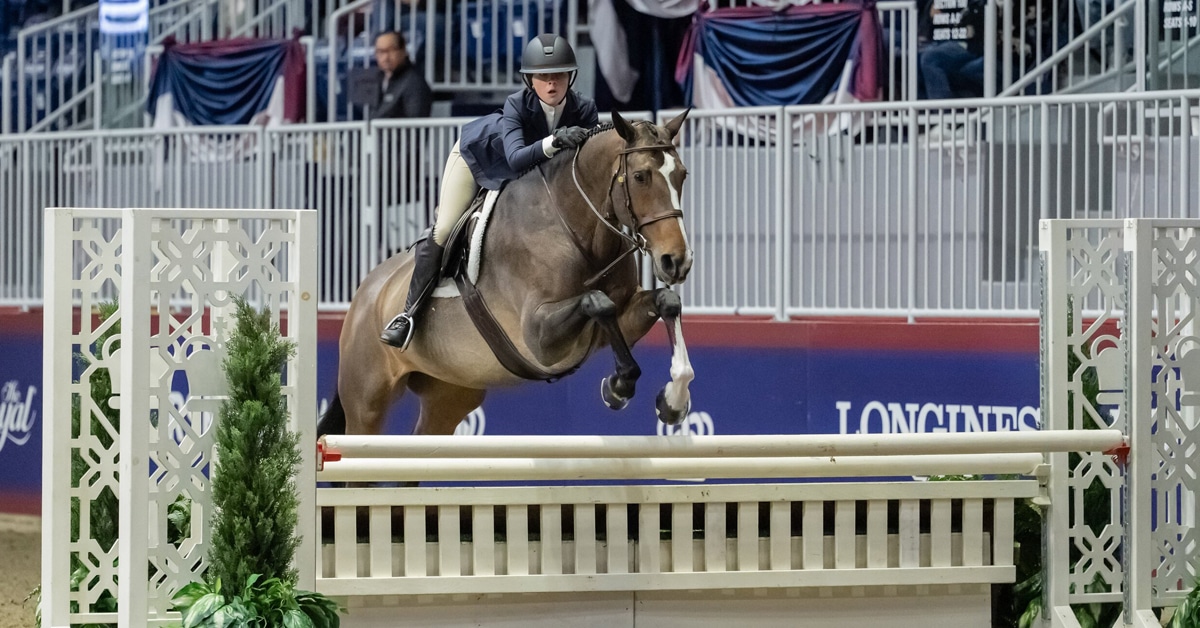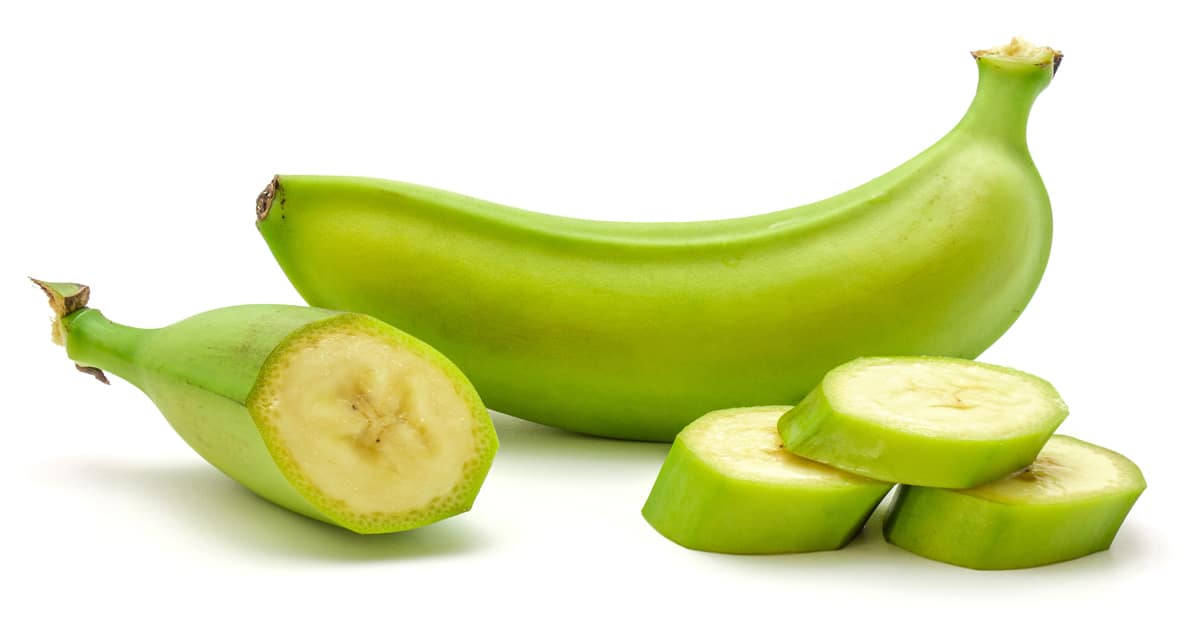Kissing spine is a skeletal abnormality in horses in which bony projections on the vertebrae of the spine called dorsal spinous processes touch or “kiss”. The condition is caused by multiple factors including conformation issues, genetic predispositions, poor posture, improper conditioning, and training under saddle at a very young age.
Horses with kissing spine do not always develop symptoms, but many horses with this condition experience varying degrees of back pain. The pain is due to the bony dorsal spinous processes grinding against one another; injury or inflammation of the ligaments between the processes; reduced range of motion in affected vertebral joints; and impingement of nerves exiting the spinal cord.

Exhibiting signs of discomfort such as shifting away, pinning ears, making faces, or snapping while being groomed over the back or saddled are typical in a horse with pain from kissing spines. (Jari Hindström – stock.adobe.com)
Some cases of kissing spine are found accidentally while investigating other issues in asymptomatic horses. In one study, 39% of horses that were radiographed – despite lack of back pain – still had radiographic changes suggestive of kissing spine. However, in the same study, 68% of horses that did present for back pain were diagnosed with kissing spine, suggesting it is a major contributor to the pain. This is the tale of rider Jennifer Moore who finally got a diagnosis after experiencing several mysterious behaviour changes in her horse.
“In the spring of 2020, after a several year hiatus from regular riding, I dusted off my tack and decided to get serious about conditioning my fifteen-year-old Clyde x TB mare, Sintra, and attempting some schooling shows for fun.
As a “re-rider” of a certain age who found myself intimidated schooling over even the smallest crosscountry obstacles, we decided to do some itty-bitty jumper classes. I set about getting Sintra fitter and strengthening her hind end and back. Hind end strength was always something we had to work at, just due to her conformation – long back, big sloping butt. Despite conscientious strengthening work, my very keen-eyed training partner and my coach were both noticing some intermittent mild unsoundness behind. We decided to start her on Previcox [a non-steroidal anti-inflammatory], and within a week or so the issue seemed to disappear.
We carried on with our season and managed a couple of teensy jumper divisions at a local schooling series. I was delighted to be competing again at any level, and riding my first ever jumper classes, but I was finding my sweet little draft-cross mare to be increasingly “spicy” off-property. I chalked it up to increased fitness and a long break from doing much off-property schooling or showing.
In the spring of 2021, we decided to do a repeat of the previous show season, as I had a lot of fun showing in 2020 and brought home some ribbons. But as our season progressed, that elusive occasional hind end “off-ness” returned, and even moderate schooling off-property was becoming increasingly difficult. Sintra would get so hot that we could end up spending an hour just trying to go over a ground rail without her getting too strong. Mid-summer we had a general lameness exam done by our regular equine vet (just flexions and watching her move in hand) which showed not a lot of anything because the mare was going sound again at that time, although a bit of muscle atrophy in her back was noted. We carried on, with the caveat that if she got worse again, we would want to start an injectable such as Legend or Polyglycan.
Near the end of August during a jump school at home, Sintra did something she had never done in the eleven years I’d owned her – she bucked me off on landing after a fence. Hard! But I was determined to not let her acting out intimidate me.
A few weeks later the mild hind end unsoundness resurfaced, and we called out a lameness specialist vet. I was also thinking we would scope her for ulcers after checking out the lameness issue, thinking the behavioural change I was seeing may have been ulcers. The lameness vet watched her move on the lunge, and carefully palpated her entire back. There was absolutely zero response to the palpation. My vet said he was actually a little stumped – that it was something high up, but to really know for sure he recommended we take her to Ontario Equine Hospital for nuclear scintigraphy and x-rays. He sent through a referral, and I hauled Sintra to the equine hospital where she would be admitted for a few days.
OEH’s Dr. Darryl Bonder called me after performing the scintigraphy and then taking x-rays of the areas of concern. It turned out there were ‘significant findings over her pelvis and back – sacroiliac disease and impingement of the dorsal spinous processes characterized by sclerosis and … reactive bone.’ In other words, kissing spines, particularly T16-T18 of the thoracic spine, pretty much right where the saddle sits.
After discussing her prognosis and the treatment options with both Dr. Bonder and my lameness vet, I made the difficult decision to retire her completely and immediately. Neither vet was in favour of surgery in her particular case, although it’s certainly helpful in many cases. Neither Dr. Bonder nor my lameness vet thought it was worthwhile as she was turning 17 and the impingement was significant. When my FEI vet repeatedly said to me “I’m not optimistic,” I chose to retire her instead and treat with daily Previcox.
Sintra is now enjoying life as a pasture ornament, happily trotting around her paddock and screaming blue murder if dinner is 10 minutes late. As heartbreaking as the diagnosis was, and as horrible as the guilt was when I realized her “spiciness” had likely been pain-related all along, I am grateful for the access to the diagnostic tools and veterinary specialists who were able to finally pinpoint the issue. My mare will remain a beloved pet for as long as we are able to keep her comfortable and pasture sound.”
Common Signs of Kissing Spine
The signs of kissing spine can be subtle and non-specific, but may include:
• Signs of discomfort (such as shifting weight, pulling faces, biting) when being groomed over the back or when pressure is applied to the back such as when the saddle is put on or the girth done up.
• Reluctance to roll or lie down.
• Mounting difficulties: refusing to stand still, running backwards or forwards when the rider’s weight is added.
• Unwillingness/inability to work with collection, preferring a hollow or constantly changing outline or repeatedly tossing the head.
• Dropping behind the rider’s leg and showing a reluctance to go forwards with impulsion.
• New or increasing instances of bucking, rearing, shying, bolting.
• Struggling to pick up the correct lead or maintain a true three-beat canter/lope, tending to break or go disunited instead.
• Muscle wasting across the topline.
Many of the typical signs can also be caused by a behavioural or training issue, or a medical condition that is not related to the horse’s back, so keeping notes of any changes you encounter and sharing this detailed history with your vet is key so they can form part of the discussion prior to diagnosis.
Treatments
Kissing spine surgery may involve some bone removal or the ligaments between the spinal processes are cut — an Interspinous Ligament Desmotomy (ISLD). This can be done under standing sedation. Back and core strengthening rehab work is required following the surgery and recovery can take six to eight weeks.
Whether or not to operate depends on how badly the bones are pressing on each other, the individual horse’s tolerance levels, its lifestyle and the owner’s financial situation.
Some horses with confirmed kissing spines can be successfully managed with ongoing physiotherapy and targeted training to strengthen and maintain the horse’s core muscles and the muscles over the horse’s back to help support the spinal column. This work may need to be combined with regular, such as twice-yearly, steroid injections into the area between the relevant spinal processes to reduce inflammation.
Other methods that your vet may recommend to help control pain and inflammation associated with kissing spines include:
• shock wave therapy
• therapeutic ultrasound
• non-steroidal anti-inflammatory drugs (NSAIDs)
• muscle relaxants
• chiropractic
• acupuncture
The Latest
